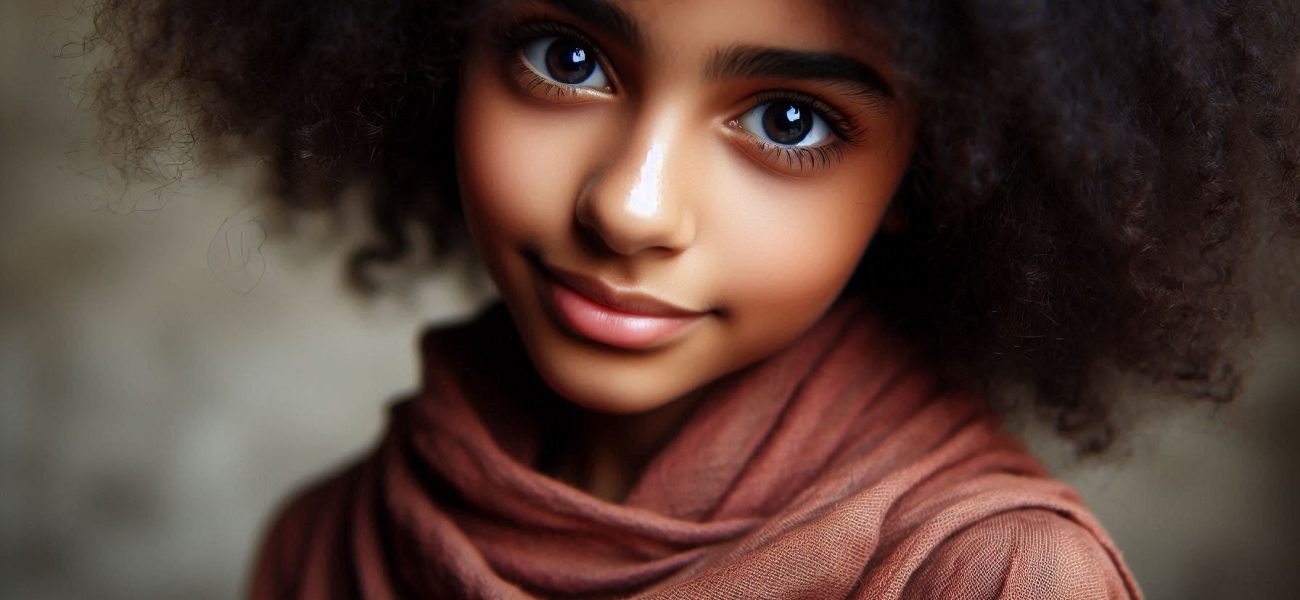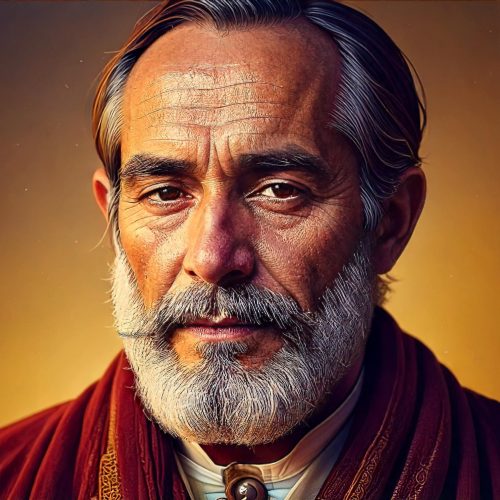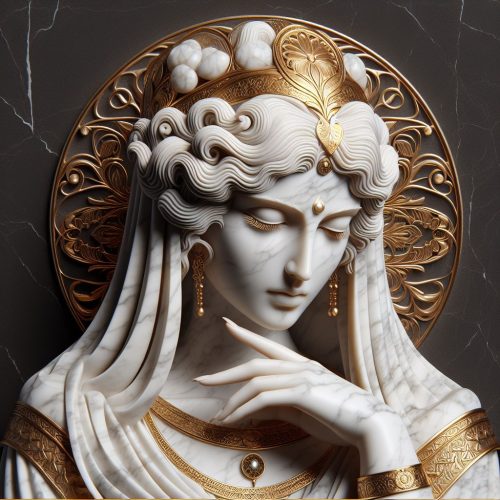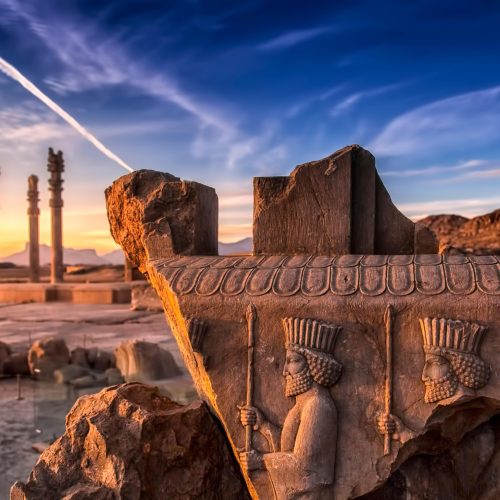As an Iranian historian with a passion for uncovering the lesser-known aspects of our nation’s diverse history, I’ve always been fascinated by the story of Afro-Iranians. It’s a tale that weaves through centuries, filled with struggle, resilience, and cultural fusion. Today, I want to take you on a journey through the vibrant world of Afro-Iranians – a community that has played a significant yet often overlooked role in shaping the rich tapestry of Iranian society.
A Glimpse into History
My fascination with Afro-Iranian history began during my university years when I stumbled upon old records mentioning the presence of African slaves in Persia. It was a revelation that opened up a whole new dimension of our country’s past.
The story of Afro-Iranians dates back over a thousand years, with the earliest records pointing to the 7th century. During this time, the expanding Arab-Muslim empire brought people from East Africa to the Persian Gulf region. These early arrivals were mostly slaves, captured during raids or purchased from slave markets in places like Zanzibar.
As I delved deeper into historical accounts, I discovered that the influx of Africans to Iran intensified during the 16th and 19th centuries. The Safavid, Afsharid, and Qajar dynasties all played a role in bringing more Africans to Iran, primarily as slaves or soldiers. Many were settled in southern Iran, particularly in the provinces of Hormozgan, Khuzestan, and Sistan and Baluchestan.
One of the most intriguing aspects of this history is the story of the Zanj Rebellion. In the 9th century, East African slaves (known as Zanj) in southern Iraq staged a massive uprising against the Abbasid Caliphate. While this rebellion didn’t directly occur in Iran, its repercussions were felt throughout the region and likely influenced the treatment and perception of African slaves in Persia.
As I continued my research, I found that the role of Africans in Iranian society evolved over time. While many started as slaves, some managed to gain freedom and even rise to positions of influence. For instance, in the Qajar era, there are accounts of African eunuchs who held significant positions in the royal court.
The abolition of slavery in Iran came relatively late, officially occurring in 1929 under Reza Shah Pahlavi. However, the process of integration and acceptance of Afro-Iranians into mainstream society has been a gradual one, continuing to this day.
Language: A Bridge Between Cultures
One of the most fascinating aspects of my research into Afro-Iranian culture has been exploring their unique linguistic heritage. As I traveled to southern Iran and spent time in Afro-Iranian communities, I was struck by the rich tapestry of languages and dialects I encountered.
Most Afro-Iranians today speak Persian (Farsi) as their primary language, but their speech is often peppered with words and expressions that hint at their African roots. In some communities, particularly in Hormozgan province, I discovered a distinct Afro-Iranian dialect called Zabun-e Shirin or “Sweet Language.” This dialect blends Persian with Swahili and Arabic influences, creating a unique linguistic cocktail that reflects the community’s diverse heritage.
During my visits to Bandar Abbas, I had the privilege of sitting with elderly Afro-Iranians who still remembered songs and stories in languages from their ancestral homelands. One grandmother shared a lullaby with me, singing softly in a mixture of Swahili and Persian. It was a poignant reminder of how language can serve as a bridge between cultures, preserving memories of distant lands across generations.
I also learned about the tradition of Zar ceremonies, where participants sometimes use words from African languages in their rituals. These linguistic remnants serve as a testament to the enduring connection between Afro-Iranians and their ancestral roots.
In my conversations with younger Afro-Iranians, I noticed a growing interest in reconnecting with their linguistic heritage. Some were taking classes to learn Swahili or other African languages, seeing it as a way to reclaim a part of their identity that had been lost over time.
The linguistic journey of Afro-Iranians is a fascinating example of how languages evolve and adapt. It’s a living reminder of the community’s resilience and ability to maintain aspects of their cultural identity while fully embracing their Iranian nationality.
A Vibrant Cultural Tapestry
As I continued my exploration of Afro-Iranian culture, I was continually amazed by the vibrant and unique traditions that have emerged from this community. It’s a beautiful blend of African heritage and Iranian customs, creating something truly special.
Music and dance play a central role in Afro-Iranian culture. During my visits to southern Iran, I had the opportunity to witness performances of Zar and Liva music. The rhythmic beats of the drums, the soulful melodies, and the energetic dances transported me to another world. I remember one particular evening in Qeshm Island, where I watched a group of Afro-Iranian musicians perform. The lead singer’s voice, rich with emotion, seemed to carry centuries of history in every note.
These musical traditions have their roots in African rituals but have evolved over time, incorporating elements of Iranian music. The result is a unique sound that is distinctly Afro-Iranian. I’ve noticed that in recent years, there’s been a growing appreciation for this music among younger Iranians of all backgrounds, with some contemporary musicians incorporating Afro-Iranian rhythms into their work.
Food is another area where the African influence is evident. In the coastal regions of southern Iran, I’ve tasted dishes that blend Iranian flavors with African spices and cooking techniques. One of my favorites is a spicy fish stew that reminded me of similar dishes I’d tasted during my travels in East Africa.
The traditional clothing of Afro-Iranians also reflects their dual heritage. While many dress in typical Iranian attire, during festivals and special occasions, I’ve seen beautiful displays of colorful African-inspired garments. The intricate patterns and vibrant colors stand out vividly against the more subdued tones of traditional Iranian dress.
One of the most fascinating cultural practices I encountered was the Zar ritual. This ceremony, believed to drive out evil spirits, has its origins in East Africa but has taken on unique characteristics in Iran. I was fortunate enough to be invited to observe a Zar ceremony in a small village in Hormozgan. The intense drumming, the swaying bodies, and the palpable energy in the air created an unforgettable experience. It was a powerful reminder of how ancient African traditions have been preserved and adapted in an Iranian context.
Art is another area where Afro-Iranian culture shines. During my research, I came across beautiful examples of handicrafts that blend African and Iranian motifs. Intricate woodcarvings, colorful textiles, and unique jewelry all bear testament to the creative fusion of these two cultures.
What struck me most about Afro-Iranian culture is its dynamism. It’s not a static relic of the past, but a living, evolving tradition. Young Afro-Iranians are finding new ways to express their dual heritage, whether through music, art, or fashion. They’re proud of both their African roots and their Iranian nationality, and this pride is reflected in the vibrant culture they continue to create and nurture.
Faith and Tradition: The Spiritual Landscape of Afro-Iranians
In my journey to understand Afro-Iranian culture, I’ve found that religion and spiritual practices play a crucial role in shaping the community’s identity. It’s a fascinating blend of Islamic traditions, ancient African beliefs, and uniquely Iranian spiritual elements.
The majority of Afro-Iranians today are Muslims, primarily adhering to Shi’a Islam, which is the dominant faith in Iran. However, as I delved deeper into their religious practices, I discovered layers of complexity that reflect their diverse heritage.
During my visits to Afro-Iranian communities in southern Iran, I observed how Islamic practices are often infused with elements that can be traced back to African spiritual traditions. For instance, the Zar ritual, which I mentioned earlier, is a prime example of this syncretism. While not officially part of Islamic practice, it coexists alongside more orthodox religious observances in many Afro-Iranian communities.
I remember attending a Muharram ceremony in a predominantly Afro-Iranian neighborhood in Bandar Abbas. The mourning rituals for Imam Hussein were familiar to me as an Iranian, but there was something distinct about the rhythms of the chest-beating and the cadence of the lamentations. An elderly man explained to me that these unique elements were influenced by African mourning traditions brought by their ancestors.
Another interesting aspect of Afro-Iranian spirituality that I encountered was the veneration of certain Sufi saints. In some communities, I found shrines dedicated to holy men believed to have African origins. These local saints often had legends associated with them that blended Islamic miracle stories with elements reminiscent of African folklore.
The month of Ramadan provided another glimpse into the unique religious practices of Afro-Iranians. While the basic tenets of fasting and prayer were the same as in other Iranian communities, I noticed distinctive traditions around breaking the fast. In one village, I was invited to an iftar meal where the food and the communal atmosphere reminded me more of what I had experienced in East Africa than a typical Iranian iftar.
It’s important to note that not all Afro-Iranians practice these syncretic forms of spirituality. Many adhere strictly to mainstream Shi’a Islam, while others have embraced other faiths present in Iran, such as Christianity or Zoroastrianism. The diversity of religious expression within the Afro-Iranian community is a testament to their complex history and the various influences that have shaped their culture over centuries.
One of the most enlightening conversations I had was with a young Afro-Iranian scholar who was studying the history of his community’s spiritual practices. He spoke passionately about the need to preserve these unique traditions while also fully embracing their Iranian and Islamic identity. “Our spiritual practices are a bridge,” he told me. “They connect us to our African ancestors, to our Iranian homeland, and to the divine.”
This idea of spirituality as a bridge resonated deeply with me. It seemed to encapsulate the essence of Afro-Iranian identity – a people who have managed to maintain connections to multiple heritages while forging a unique path forward.
As I reflected on the religious and spiritual landscape of Afro-Iranians, I was struck by its resilience and adaptability. Despite centuries of change and the pressures of assimilation, these communities have managed to preserve elements of their ancestral spiritual practices while fully embracing their Iranian identity. It’s a beautiful example of how faith can evolve and adapt, creating new forms of expression that honor multiple traditions.
Traditions: A Living Heritage
As I continued my exploration of Afro-Iranian culture, I became increasingly fascinated by the rich tapestry of traditions that have been passed down through generations. These customs, some ancient and others more recent, form the backbone of Afro-Iranian identity and provide a tangible link to their diverse heritage.
One of the most striking traditions I encountered was the annual Nowruz celebrations in Afro-Iranian communities. While Nowruz, the Iranian New Year, is celebrated throughout Iran, I noticed unique elements in the way Afro-Iranian families marked the occasion. In a small village in Hormozgan, I was invited to join a family for their Nowruz feast. Alongside the traditional Haft-sin table, there was a special dish made from plantains – a nod to their African roots. The grandmother of the family explained that this fusion of Iranian and African elements in their Nowruz celebration was a way of honoring both sides of their heritage.
Wedding ceremonies in Afro-Iranian communities also offered a fascinating glimpse into their blended traditions. I had the privilege of attending an Afro-Iranian wedding in Bandar Abbas, and it was a joyous explosion of color, music, and dance. The bride wore a beautiful white dress that could have been seen in any Iranian wedding, but it was adorned with vibrant African-inspired patterns. The music alternated between traditional Iranian wedding songs and rhythmic African-influenced beats that had everyone on their feet.
Another important tradition I learned about was the coming-of-age ceremony for young Afro-Iranian boys. In some communities, this involves a ritual that combines elements of Iranian culture with practices that can be traced back to East Africa. The young man is dressed in special clothes, and there’s a ceremony involving music and dance. An elder from the community imparts wisdom and advice, emphasizing the importance of honoring both their Iranian nationality and their African heritage.
Food traditions play a significant role in Afro-Iranian culture, and I was continually amazed by the unique dishes I encountered. In addition to the spicy fish stew I mentioned earlier, I tasted a variety of foods that blended Iranian and African culinary traditions. One memorable dish was a kind of bread pudding made with dates and flavored with cardamom and coconut – a delicious fusion of flavors that seemed to embody the Afro-Iranian experience.
Storytelling is another vital tradition in Afro-Iranian communities. During my research, I had the opportunity to sit with elders who shared stories that had been passed down through generations. These tales often featured characters and motifs from both Iranian and African folklore, creating a unique narrative tradition. I was particularly moved by a story about a clever monkey who outwitted a Persian prince – a tale that seemed to playfully subvert traditional power dynamics while entertaining listeners of all ages.
One of the most poignant traditions I encountered was the practice of naming. Many Afro-Iranian families have a tradition of giving their children both an Iranian name and an African name. This dual naming serves as a constant reminder of their rich heritage and helps to preserve a connection to their ancestral roots.
As with many aspects of Afro-Iranian culture, I noticed that these traditions are not static. Younger generations are finding ways to adapt and reinterpret these customs for the modern world. For example, I met a group of young Afro-Iranian artists who were creating digital art inspired by traditional African patterns and Iranian calligraphy. Their work was a beautiful representation of how traditions can evolve and find new forms of expression.
What struck me most about Afro-Iranian traditions was the sense of pride with which they were maintained and celebrated. Despite facing discrimination and marginalization at various points in history, these communities have held onto their unique customs, seeing them as a source of strength and identity.
As I reflected on the myriad traditions I had encountered, I was filled with a deep appreciation for the resilience and creativity of Afro-Iranian culture. These traditions serve as a living bridge between past and present, between Africa and Iran. They are a testament to the power of cultural fusion and the enduring human spirit.
Notable Afro-Iranians: Trailblazers and Inspirations
Throughout my research into Afro-Iranian history and culture, I’ve had the privilege of learning about numerous individuals who have made significant contributions to Iranian society. These notable Afro-Iranians have excelled in various fields, from arts and sports to politics and academia. Their stories are not just inspiring on a personal level, but they also serve as powerful testaments to the resilience and talent of the Afro-Iranian community.
One of the most prominent Afro-Iranians in recent history is Ezzatollah Entezami, a renowned actor often referred to as the “gentleman of Iranian cinema.” Born in 1924 to an Afro-Iranian father and an Iranian mother, Entezami became one of the most respected figures in Iranian theater and cinema. I remember watching his powerful performance in the classic film “The Cow” and being struck by his ability to convey complex emotions with subtle gestures. Entezami’s success helped pave the way for greater acceptance and recognition of Afro-Iranians in the arts.
In the world of sports, Hashed Beykzadeh stands out as a trailblazer. Born in 1984 in Ahvaz, Beykzadeh became a professional football player, representing Iran in international competitions. I had the chance to interview Beykzadeh, and he spoke candidly about the challenges he faced as an Afro-Iranian athlete. Despite facing racism and discrimination, he persevered and became a role model for young Afro-Iranians aspiring to careers in sports.
The field of music has also seen significant contributions from Afro-Iranians. One artist who has made a particularly strong impact is Saeed Shanbehzadeh. Born in Bushehr, Shanbehzadeh is a renowned musician and dancer who has brought traditional Afro-Iranian music to international audiences. I attended one of his performances in Tehran, and the energy and passion he brought to the stage was electrifying. Through his art, Shanbehzadeh has not only preserved traditional Afro-Iranian music but also given it new life and relevance in the contemporary world.
The Legacy of Afro-Iranians in Art and Music
One of the most remarkable aspects of Afro-Iranian culture is its influence on Iranian music, particularly in the southern regions of the country, such as Hormozgan and Bushehr. I had the chance to visit these regions during my research, and I was struck by the vibrant and distinct musical traditions that have their roots in African rhythms and melodies.
In Hormozgan, for example, the music is heavily influenced by the African diaspora. The use of drums, percussion instruments, and call-and-response singing is reminiscent of African musical traditions. One of the most famous Afro-Iranian musicians, Saeid Shanbehzadeh, has worked tirelessly to preserve and promote this unique form of Iranian-African music. Shanbehzadeh, who hails from Bushehr, has become an international ambassador for Afro-Iranian music, blending traditional sounds with modern influences to create something truly extraordinary.
I had the pleasure of meeting Shanbehzadeh during one of his performances, and I was struck by how deeply he connected with his Afro-Iranian heritage. He spoke passionately about the importance of remembering and celebrating the African roots of this music, which had been marginalized for so long. His work is a powerful reminder that Afro-Iranians are not just a footnote in Iranian history; they are an integral part of our cultural heritage.
The Role of Afro-Iranians in Society
While Afro-Iranians have made significant contributions to Iran’s cultural landscape, their integration into society has not always been easy. Historically, Afro-Iranians faced discrimination and prejudice, much like other marginalized groups around the world. However, despite these challenges, many Afro-Iranians have risen to prominence in various fields, from politics to sports.
One of the most notable figures in this regard is Jalal al-Din Taheri, an Afro-Iranian who became a prominent religious leader and politician. Born in the southern province of Hormozgan, Taheri was known for his progressive views and his dedication to social justice. His work as an imam and politician earned him respect not only within the Afro-Iranian community but also among the broader Iranian population.
In many ways, Taheri’s story is emblematic of the broader Afro-Iranian experience. Despite facing discrimination, he was able to rise to a position of influence and use his platform to advocate for the rights of marginalized communities. His legacy continues to inspire Afro-Iranians today, many of whom are working to challenge the stereotypes and prejudices that still exist.
The Struggles and Triumphs of Afro-Iranians
As I researched the history of Afro-Iranians, I was struck by the deep sense of pride that many members of the community feel for their heritage. However, this pride coexists with a long history of struggle. For centuries, Afro-Iranians were relegated to the margins of society, their contributions overlooked and their voices silenced.
One of the most heart-wrenching aspects of this history is the legacy of slavery. While slavery was officially abolished in Iran in the late 19th century, its effects were felt for generations. Many Afro-Iranians were born into poverty, with limited access to education and economic opportunities. This has created significant disparities that still exist today, particularly in the southern provinces where many Afro-Iranians continue to live.
But despite these challenges, the Afro-Iranian community has shown incredible resilience. Over the years, they have carved out spaces for themselves in Iranian society, whether through music, art, or activism. One of the most inspiring examples of this is the work of Afro-Iranian activists who are fighting for greater recognition and representation.
I remember meeting one such activist, a young woman from Bandar Abbas, who spoke passionately about the need for more Afro-Iranian voices in public life. She told me about the challenges she faced growing up, constantly being reminded that she was “different” because of her skin color. But instead of letting this discrimination define her, she used it as motivation to fight for change. Today, she works with local organizations to promote Afro-Iranian culture and advocate for the rights of marginalized communities.
Afro-Iranians and Iranian National Identity
One of the most interesting questions that arises when discussing Afro-Iranians is how they fit into the broader narrative of Iranian national identity. Iran is a country with a rich and diverse history, and its national identity is shaped by a wide range of influences, from Persian to Turkic to Arab. But where do Afro-Iranians fit into this narrative?
In many ways, the story of Afro-Iranians challenges the traditional understanding of what it means to be Iranian. For centuries, Iranian identity has been closely tied to Persian culture and language. But the presence of Afro-Iranians—and other ethnic and cultural minorities—reminds us that Iranian identity is far more complex and multifaceted than we might think.
As I continued my research, I realized that Afro-Iranians are not just a part of Iran’s past; they are a vital part of its present and future. By embracing the diversity of our country, we can build a more inclusive and just society, one that recognizes the contributions of all its people, regardless of their background.
Celebrating Afro-Iranian Heritage
In recent years, there has been a growing movement to celebrate Afro-Iranian heritage and raise awareness about the community’s contributions to Iranian society. This is something that I have personally been involved in, through my work as a historian and educator. I believe that by telling the stories of Afro-Iranians, we can help to challenge the stereotypes and prejudices that still exist today.
One of the ways this is being done is through cultural festivals and events that showcase Afro-Iranian music, dance, and art. These events provide a platform for Afro-Iranians to share their heritage with the broader Iranian public and help to foster a greater understanding of the community’s history and culture.
I attended one such festival in Bandar Abbas a few years ago, and it was an experience I will never forget. The energy and excitement in the air were palpable as musicians from across the region came together to perform traditional Afro-Iranian music. The audience, made up of people from all walks of life, danced and sang along, celebrating the rich cultural heritage that Afro-Iranians have brought to our country.
As I reflect on the stories of notable Afro-Iranians, I am filled with a sense of hope for the future. While there is still much work to be done to achieve true equality and recognition for Afro-Iranians, I believe that we are moving in the right direction. The growing awareness of the community’s contributions, combined with the efforts of activists and scholars, is helping to shift the narrative and challenge long-held assumptions about race and identity in Iran.
In the years to come, I hope to see more Afro-Iranians in positions of leadership and influence, whether in politics, academia, or the arts. I also hope that we, as a society, will continue to embrace the diversity that makes Iran so unique. By doing so, we can build a more inclusive and equitable future for all Iranians, regardless of their background.
The story of Afro-Iranians is one of resilience, creativity, and perseverance. Despite the challenges they have faced, they have made significant contributions to Iranian society and continue to shape our culture in profound ways. As an Iranian scholar, I am proud to play a small part in telling their story and ensuring that their voices are heard. By celebrating the rich diversity of our country, we can honor the legacy of Afro-Iranians and build a brighter future for all.




